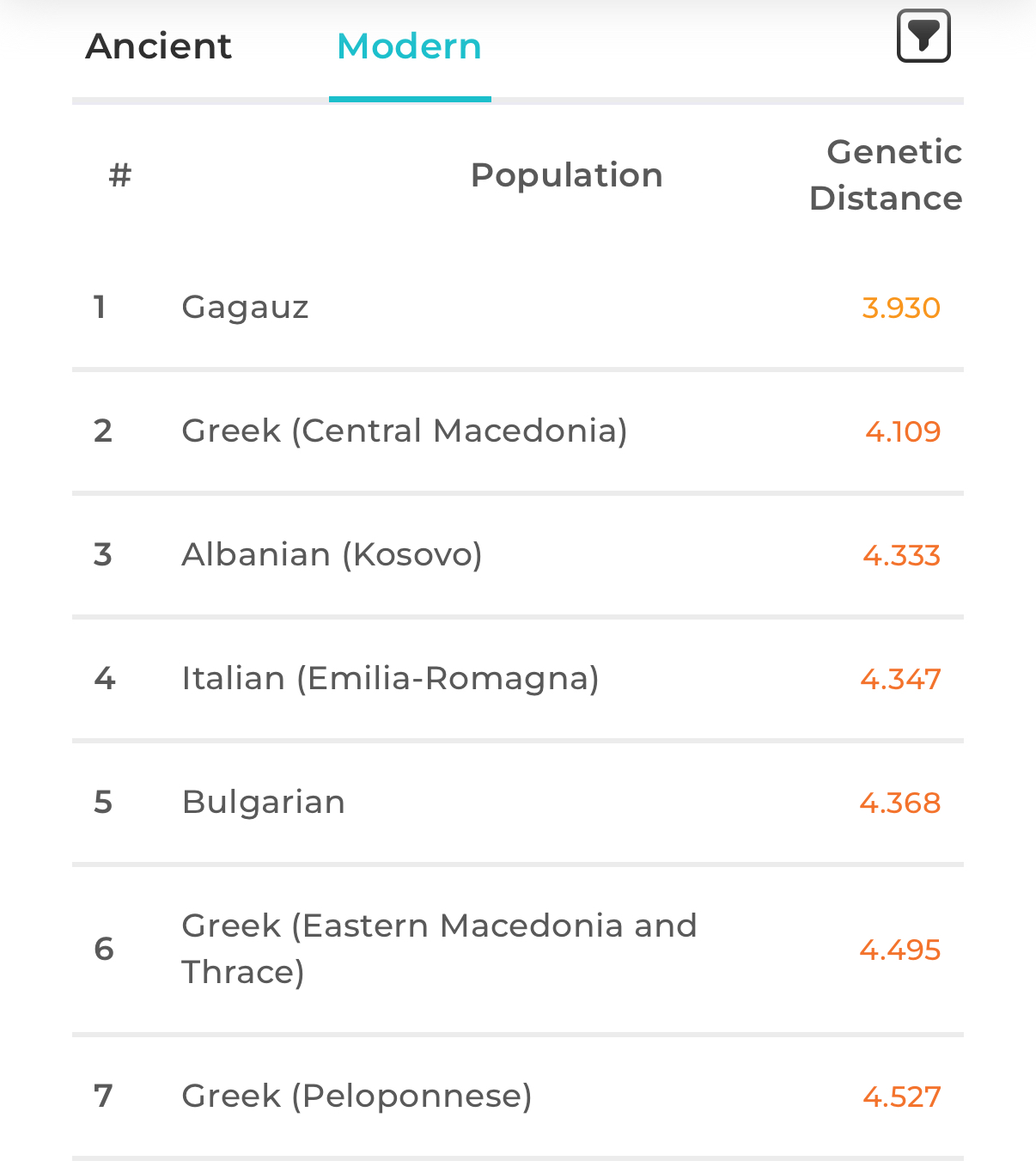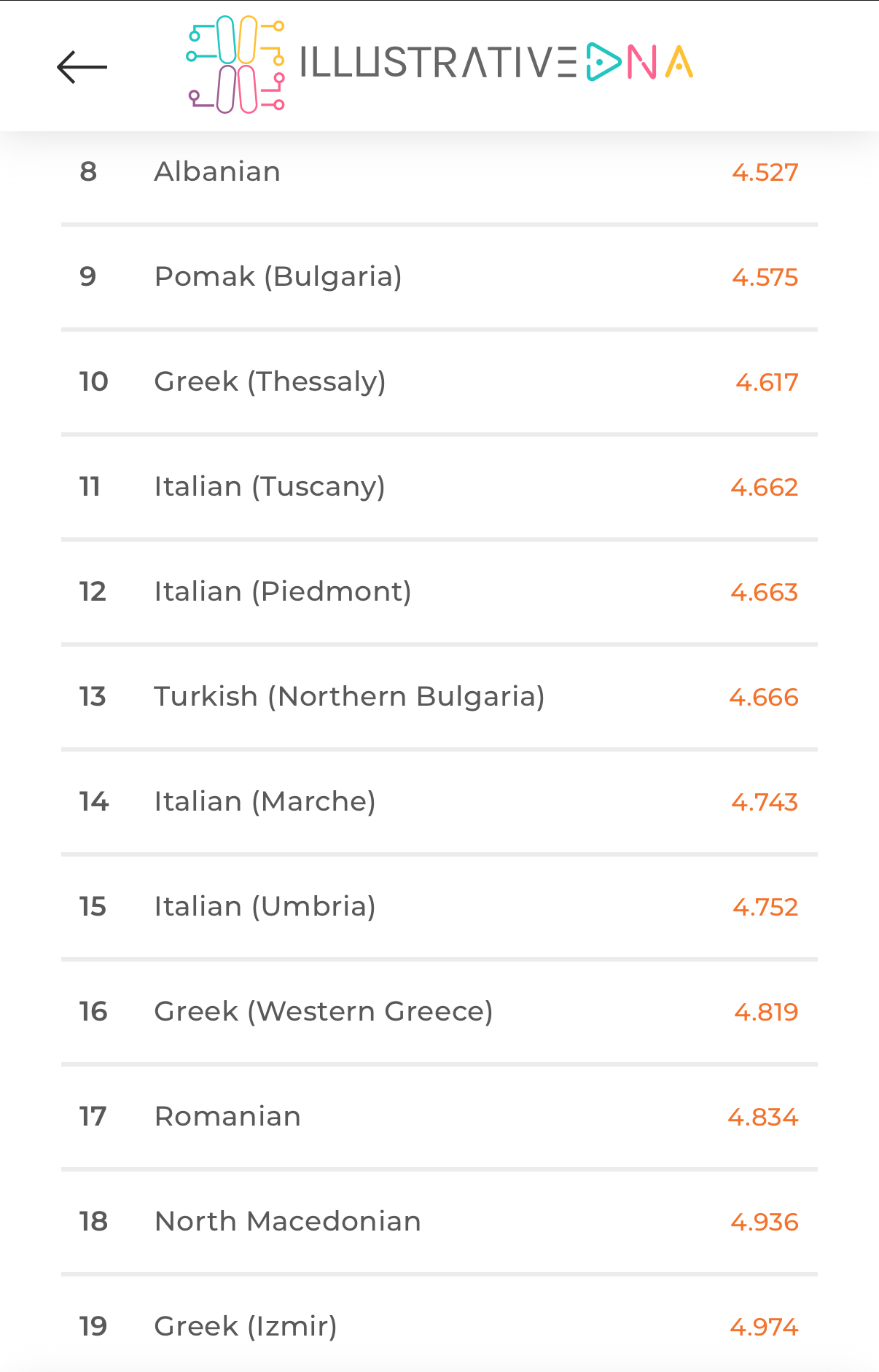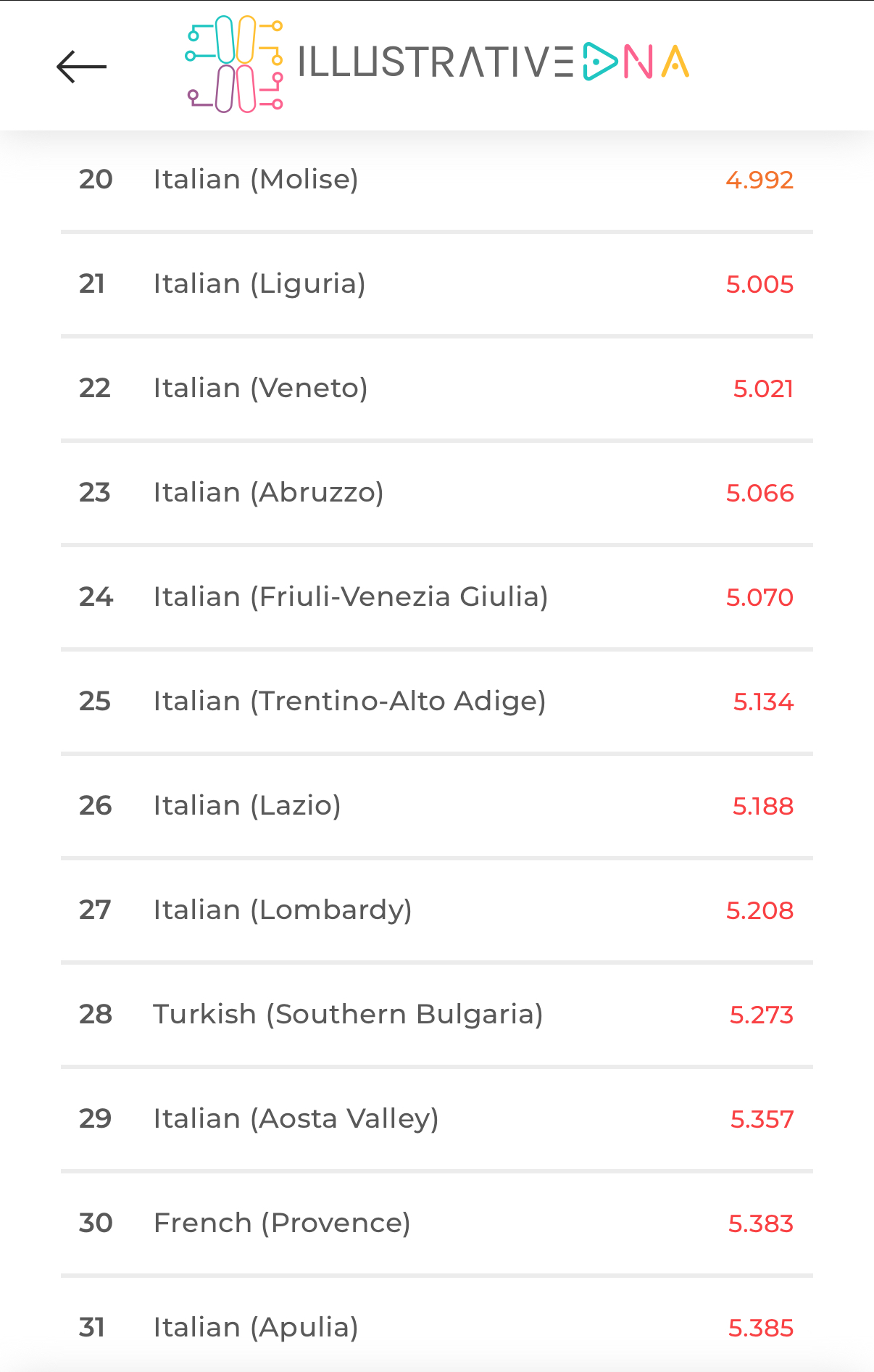registerfasterusing
These lil nigga
- Joined
- Oct 12, 2024
- Posts
- 21,199
- Reputation
- 36,163
After analyzing my Illustrative DNA results and doing research of mine own, I’ve come to discover the potentiality of the pre-Ottoman origins of several Turkic groups in the Balkans and West Asia.
As far as I am aware, my Azeri ancestry can be traced back to the Kangarlu tribe, itself a branch of the Ustajlu Turkomans. The Ustajlu were one of the seven Qizilbash tribes in Safavid Iran, and their roots can be traced back to the Begdili Oghuz. The Begdili are also sometimes credited, alongside the Qangli (Kangly) and others, with being the source of the Khwarazmian dynasty.
The Kangarlu originated in what is now the Nakhchivan Autonomous Republic, an exclave of Azerbaijan. Most contemporary histories agree the Kangarlu, along with other Turkoman nomads, arrived in the Caucasus sometime between the 10th and 14th centuries. However, some Azerbaijani historiographers posit an earlier Caucasian advent for the Kangarlu in particular. These sources state that Turkic peoples resided in the Caucasus as early as the 1st century BCE, having notably established themselves by the Hunnic expansions of the 4th century CE. Azerbaijani historians suggest that the name ‘Kangarlu’ should be associated with the Kangar Union, a 7th to 8th century CE confederation of primarily Pecheneg nomads in the Caspian Steppe. This could potentially insinuate a Pecheneg origin for the Kangarlu tribe. Although, most Western historians push aside these narratives as pseudo-historiography; attempts to validate ancient Turkic presence in the Caucasus, and therefore justifying Azerbaijani claims to the region.
Another interesting facet of this theory is the etymological connection of the Kangarlu, Kangar Union, and Kangly. Whether or not this is mere coincidence or demonstrative of a shared common linguistic or genetic ancestor, remains unknown.
Historian András Róna-Tas notes that Kangar as an ethnic name existed in Caucasia “as early as the 6th century, before the Turkic peoples emerged” there. This has led scholars to suspect that the Pechenegs adopted the prestigious name ‘Kangar’ from an earlier group (perhaps because Constantine VII recorded Kangar meant ‘noble, brave’ ). This perhaps means that the title was adopted by different groups over time through a kind of popular etymology. ‘Kangar’ is also an ethnic name from the early medieval era used to refer to the Kangly and Uyghur peoples, as both resided in the historic territory of ‘Kang’ (from the Indo-European ‘Kangju’) in present-day Uzbekistan.
Despite this, I’ve recently noticing something that could support a Pecheneg origin, at least partially, for the Kangarlu.
My Illustrative DNA results show the Gagauz to be my closest modern population:

Also, notice how Turkish (Northern Bulgaria) is significantly closer than Turkish (Southern Bulgaria):


Valentin Moshkov claims that the Deliorman Turks (Turks from Northern Bulgaria) are the descendants of Pechenegs. Whereas, Thracian Turks (including Turks from Southern Bulgaria) are the descendants of Ottoman settlers.
This doesn’t necessarily support a Pecheneg origin for the Gagauz, as some clusters, such as this Deliorman Turk’s results, place the Gagauz closer to Thracian Turks:
This Balkan Turk result, however, places the Gagauz in closer proximation to Deliorman Turks:
The, albeit seemingly minor, genetic distance between Deliorman and Thracian Turks should not be disregarded. It is very likely that the Turkish population of Northern Bulgaria has intermixed with local Ottoman Turkish communities, but this does not remove the potential for a Pecheneg derivation of both the Deliorman Turks and Gagauz.
Additionally, the Pecheneg language, although disputed in classification, may have been a branch of Western Oghuz, alongside Ottoman Turkish. Most instances of a Kipchak classification of the Pecheneg language come from the 12th century or later, whereas earlier historical records, such as that of 11th century lexicographer Mahmud al-Kashgari, imply an Oghuz foundation. This could intimate a ‘Kipchakification’ of the Pechenegs during their westward migration following the collapse of the Pecheneg Khanate in the 11th century, as they collided with the Cuman-Kipchak confederation on the Pontic-Caspian steppe.
The Gagauz and Balkan Turkish languages are not sub dialects of Ottoman Turkish, rather they fall under the Western Oghuz branch as a whole:

Perhaps, the old Pecheneg language survived amongst what was to become the Gagauz and Deliorman Turks of today…
The Deliorman Turk, whose Illustrative results were previously mentioned, said the following under his post:
“Hello,
I was born in a Turkic village located in the north of Bulgaria, near Varna. We all speak the Turkish language, but we are not originally from Türkiye. As far as I know, and from what I’ve heard, we are Turks who migrated to the Balkans from Central Asia before the Ottoman Empire.
One of the most distinct features of our community is that most of us are blond, with blue eyes and fair skin. We traditionally don’t intermarry with Bulgarians or other ethnic groups—only with other Bulgarian Turks.
We don’t have any relatives or connections in Türkiye, and none of us hold Turkish citizenship.
When it comes to religion, we still preserve some elements of the ancient Turkic belief system, including Tengrism rituals, although not as strongly as before. Nowadays, we are mostly Muslim, but more in a cultural sense than a strictly religious one.
I’d be happy to hear your thoughts or any comments you might have. Thank you!”
In conclusion, the Pecheneg origins of the Gagauz, Deliorman Turks, and Kangarlu Azeris are highly disputed and without significant supportive evidence. However, the presented examples are sources of information that could demonstrate the validity of the theory.
Let me know your thoughts, thanks
As far as I am aware, my Azeri ancestry can be traced back to the Kangarlu tribe, itself a branch of the Ustajlu Turkomans. The Ustajlu were one of the seven Qizilbash tribes in Safavid Iran, and their roots can be traced back to the Begdili Oghuz. The Begdili are also sometimes credited, alongside the Qangli (Kangly) and others, with being the source of the Khwarazmian dynasty.
The Kangarlu originated in what is now the Nakhchivan Autonomous Republic, an exclave of Azerbaijan. Most contemporary histories agree the Kangarlu, along with other Turkoman nomads, arrived in the Caucasus sometime between the 10th and 14th centuries. However, some Azerbaijani historiographers posit an earlier Caucasian advent for the Kangarlu in particular. These sources state that Turkic peoples resided in the Caucasus as early as the 1st century BCE, having notably established themselves by the Hunnic expansions of the 4th century CE. Azerbaijani historians suggest that the name ‘Kangarlu’ should be associated with the Kangar Union, a 7th to 8th century CE confederation of primarily Pecheneg nomads in the Caspian Steppe. This could potentially insinuate a Pecheneg origin for the Kangarlu tribe. Although, most Western historians push aside these narratives as pseudo-historiography; attempts to validate ancient Turkic presence in the Caucasus, and therefore justifying Azerbaijani claims to the region.
Another interesting facet of this theory is the etymological connection of the Kangarlu, Kangar Union, and Kangly. Whether or not this is mere coincidence or demonstrative of a shared common linguistic or genetic ancestor, remains unknown.
Historian András Róna-Tas notes that Kangar as an ethnic name existed in Caucasia “as early as the 6th century, before the Turkic peoples emerged” there. This has led scholars to suspect that the Pechenegs adopted the prestigious name ‘Kangar’ from an earlier group (perhaps because Constantine VII recorded Kangar meant ‘noble, brave’ ). This perhaps means that the title was adopted by different groups over time through a kind of popular etymology. ‘Kangar’ is also an ethnic name from the early medieval era used to refer to the Kangly and Uyghur peoples, as both resided in the historic territory of ‘Kang’ (from the Indo-European ‘Kangju’) in present-day Uzbekistan.
Despite this, I’ve recently noticing something that could support a Pecheneg origin, at least partially, for the Kangarlu.
My Illustrative DNA results show the Gagauz to be my closest modern population:

Also, notice how Turkish (Northern Bulgaria) is significantly closer than Turkish (Southern Bulgaria):


Valentin Moshkov claims that the Deliorman Turks (Turks from Northern Bulgaria) are the descendants of Pechenegs. Whereas, Thracian Turks (including Turks from Southern Bulgaria) are the descendants of Ottoman settlers.
This doesn’t necessarily support a Pecheneg origin for the Gagauz, as some clusters, such as this Deliorman Turk’s results, place the Gagauz closer to Thracian Turks:
This Balkan Turk result, however, places the Gagauz in closer proximation to Deliorman Turks:
The, albeit seemingly minor, genetic distance between Deliorman and Thracian Turks should not be disregarded. It is very likely that the Turkish population of Northern Bulgaria has intermixed with local Ottoman Turkish communities, but this does not remove the potential for a Pecheneg derivation of both the Deliorman Turks and Gagauz.
Additionally, the Pecheneg language, although disputed in classification, may have been a branch of Western Oghuz, alongside Ottoman Turkish. Most instances of a Kipchak classification of the Pecheneg language come from the 12th century or later, whereas earlier historical records, such as that of 11th century lexicographer Mahmud al-Kashgari, imply an Oghuz foundation. This could intimate a ‘Kipchakification’ of the Pechenegs during their westward migration following the collapse of the Pecheneg Khanate in the 11th century, as they collided with the Cuman-Kipchak confederation on the Pontic-Caspian steppe.
The Gagauz and Balkan Turkish languages are not sub dialects of Ottoman Turkish, rather they fall under the Western Oghuz branch as a whole:

Perhaps, the old Pecheneg language survived amongst what was to become the Gagauz and Deliorman Turks of today…
The Deliorman Turk, whose Illustrative results were previously mentioned, said the following under his post:
“Hello,
I was born in a Turkic village located in the north of Bulgaria, near Varna. We all speak the Turkish language, but we are not originally from Türkiye. As far as I know, and from what I’ve heard, we are Turks who migrated to the Balkans from Central Asia before the Ottoman Empire.
One of the most distinct features of our community is that most of us are blond, with blue eyes and fair skin. We traditionally don’t intermarry with Bulgarians or other ethnic groups—only with other Bulgarian Turks.
We don’t have any relatives or connections in Türkiye, and none of us hold Turkish citizenship.
When it comes to religion, we still preserve some elements of the ancient Turkic belief system, including Tengrism rituals, although not as strongly as before. Nowadays, we are mostly Muslim, but more in a cultural sense than a strictly religious one.
I’d be happy to hear your thoughts or any comments you might have. Thank you!”
In conclusion, the Pecheneg origins of the Gagauz, Deliorman Turks, and Kangarlu Azeris are highly disputed and without significant supportive evidence. However, the presented examples are sources of information that could demonstrate the validity of the theory.
Let me know your thoughts, thanks
Last edited:




